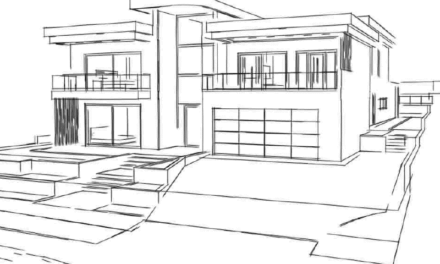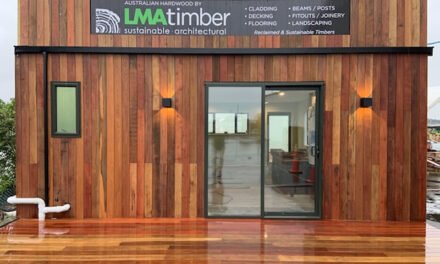Supplier software packages are one easy and accessible way to solve some of the common problems arising from high demand and low supply – and they’re now better than ever.
Ernest Rutherford, the New Zealand-born father of nuclear physics, once said “Gentlemen, we have run out of money, it’s time to start thinking.”
Substitute ‘LVL’ for ‘money’ (because no amount of cash is going to solve some of the current issues) and the same thought translates neatly to Australian construction. An unpredictable set of circumstances has led to significant supply issues at the same time as high demand and builders, fabricators and even suppliers have been left short.
“We’ve got the same problems everyone else has,” says Craig Kay, national product engineer at Tilling Timber.
“When it fires, the US sucks in every bit of spare wood from around the world. I’m hearing of people who have long term contracts asking if they can have a suspension, because they can make twice as much selling to the US.”
Kay emphasises this isn’t a permanent issue: “In the future, when it’s going the other way, which it always does, suddenly the same people will be saying ‘can you take more of our wood? We can’t sell it!’ and the pricing will go the other way.”
Until then, it’s a case of using the materials we have to do the job. And, as Kay says, there’s a lot of software support and engineering expertise available from the major Australian timber supply companies to help their customers do exactly that.
Design to build
While the news on material supply is patchy, the news on supplier software is good. Both Meyer Timber and Tilling are rolling out new packages that will help designers, fabricators and builders work better and faster and provide a wider range of solutions. But even before those fully roll out, their traditional packages already offer good alternatives.
All the major suppliers have highly practical and usable products on offer, with each having different key strengths.
When it comes to dealing with shortages, builders have a few options at their disposal, says Afzal Laphir, principal engineer at Meyer Timber. When the specified LVL is either not available or is subject to lengthy delays, the supplier can offer an alternative, which can come in different forms.
“An alternative specification can typically be a double laminate of a smaller sized LVL that is in stock (eg: 2/200×45 in place of 240×45) or a different type like a glue-laminated beam or even an I-joist,” says Laphir. ”Our customers can use our designIT software to achieve this alternative specification
“It is important to note that the substitution of any product, let alone LVL, cannot be completed without the approval of the building surveyor. Using their discretion, they may either accept a design certificate from the software , as is the common case, or occasionally ask for additional certification from an engineer.”
“A building surveyor’s requirement may change, depending on the type of component, its application and complexity, so early communication is necessary to avoid delays on site.”
Tilling’s software is designed with this sort of quick adaptability in mind. “Because we own our software, when needed, we can change it within literal minutes,” says Kay.
“We have all the different generic varieties such as MGPs in there from the start. Someone much wiser than me said to me many years ago, ‘Craig, the software people choose to have on their desktop is going to be the one that does most things for most people, and they don’t want to open up specialist programs every time they have to deal with a product out of the ordinary.’
“When a new product comes along, I can have it in there within half an hour. We upload it on the website and as people open our software, if they’re connected to the web, they’re notified there’s a new version. We can have it in their hands virtually straight away.”
The software knows which state the user is operating in and whether there are current issues with product supply in that state as well as what lengths and cuts are common in that state.
“It gives you a range of materials that will satisfy and do the job successfully,” Kay says. “Our hope, of course, is that you’d choose the SmartFrame one out of those options.”
When a suitable substitute is not found within the standard range of timber products, some EWP suppliers can offer innovative prefabricated options.
“They have in-house engineers like George Dolezal and myself at Meyer Timber, or Craig and his team at Tillings,” says Laphir. “We have the capacity to come up with solutions that software may not currently provide.”
Recent options from Laphir and Dolezal include using I-joists as a lintel and the special composite meyJOIST and OSB (CMO) beam around staircases.
“They offer an alternative to LVL and help ease supply issues for our customers,” Laphir says. “At the same time, these solutions have also helped us manage our stock levels more efficiently, by making better use of available material.
“In some situations, the truss and frame manufacturers can also offer alternative solutions to LVL beams, like parallel chord trusses and joined beams, using software provided by their respective nailplate suppliers,” he adds.
Adding dimensions
As suppliers put more focus on services in a bid to help customers through this shortage period, their software offers are evolving.
“With our SmartFrame 2021, we’re moving into the 3D space,” says Kay.
“Soon, when a customer does a layout in our system, they’ll be able to turn it around and see any conflict points from any angle. The software’s getting smarter to the point it knows exactly where the component is; rather than just seeing it as a line on a drawing, it’s at a level, too.”
The 3D version will be a staged release. “The one that does the quick analysis will be first,” Kay says, “and that will introduce some new firsts for timber software. It will let you design notches and holes and all those elements into the product, which is a capability that has been missing until now.
“If you’re in a cyclonic area, you’ll be able to model drilling down cyclone rods through the structure. If it’s on the second storey you might need to taper off at the edge through the roofline. Currently, it’s often the case that no-one’s thought about that so you end up having to cut a big chunk off the end. Or you have the situation where someone on site who will remain nameless has drilled a big hole in a piece of timber and the building surveyor asks ‘Is that OK?’ Now the builder can just use their phone and this software to model that and check it themselves with no delay.”
Kay adds, “Previously that would have involved a call to our Design Centre and we would have had to check it here and it could have taken time. This frees them up.”
The 3D update has been several years in the design and has been largely run by the Tilling engineering team with their own code writers. The release is similarly practical.
“We’re beta testing at the moment and we need to work through that process, because every piece of new software always has a bug somewhere even if it’s just in how it displays on different devices,” says Kay.
“We’re also writing the help guide at the moment, so I’ve given the software to people who have never seen it before and shown them how it works. As they use it, they’re writing down how that training process goes, both with us and how they train themselves, and we’ll using that as the basis for the training guide. It means that the people who’ll be using it are the ones who’ve directed the guide.”
The software comes with generic timber products such as MGP, pine and F8s pre-loaded, as well as Tilling’s branded product.
“It won’t include someone else’s proprietary product, but for most mixed construction using our products it will all be there,” says Kay. “This includes some limited steel sections as well, because we have to be practical. Timber doesn’t always work in every application so if people want to know what sized steel piece they can use, they can get that in as well. We’re trying to provide a solution, not just sell only wood.”
While the first iteration is comparatively simple against some of the less-practical architectural software that allows 3D renders to be walked through in VR, the Tilling team is already working on the next versions.
“This will continue to evolve,” Kay says. “In the future, you’ll be able to do slices through the 3D and other whiz-bang options, and people will have a choice of how they view it. Is this going to sell more wood? I don’t know, but it looks bloody good!”
Familiar interface
Meyer Timber’s most recent software evolution has been securing the exclusive rights to the Carter Holt Harvey design software package in Australia after CHH’s departure.
“It’s software that’s been out in the market for a long time, so it’s familiar to our customers and the many engineers who have access to it,” says Laphir. “Now we’ve gained exclusive rights to use it in the Australian market to support the Meyer Timber product range.”
As distributors for CHH product, Meyer Timber’s range had long been native to the CHH software, so this acquisition means a seamless transition for the Meyer team, rather than adding a new product.
“There are three separate modules, in addition to an app version,” Laphir says.
“The first, designIT for houses, is the module that is most commonly used by our customers. It can design almost every timber member one can think of in a house.
“The second module, designIT for commercial floors – as the name suggests – is used for the design of floor systems in commercial buildings.
“The third module, layITout, is essentially a detailing tool for floor and rafter systems, primarily used by our internal design team.”
This module is integrated with designIT to enable seamless design of components like joists, rafters and beams. layITout can generate separate joist and beam layouts, along with a schedule of components and hangers and their quantities.
“On the one hand, this functionality helps builders on site to easily understand what is being specified, where they meant to go and how they are fixed,” says Laphir.
“And on the other hand, the information on the layouts can be used to generate orders without much fuss.”
One piece of software can’t do everything, Laphir cautions. Meyer Timber’s web-based customer portal meyPlan will still be an essential part of the process at both ends.
“Our customers using meyPLAN are able to plan ahead their floor system quotes and delivery,” Laphir says. “The customer has visibility on where their job is at and if required, they can submit additional documents or add relevant notes to the job.”
All this can be done ‘live’ on meyPLAN, which is also accessible via smart phone and tablet.
Easing ordering
The customer portals launched by major suppliers in recent years allow for these integrations of job management with design software, which has simplified processes for both customers and suppliers. Tilling has focused heavily on theirs, to the point where it can now act like a B2B version of engineering software.
“We have customers whose design teams will create an order file and they send it straight to us through that portal,” says Kay. “Their take-off people will do a design for, say, a Simmonds house, then instead of them having to type an order for it, the software generates that order file and it’s sent straight through.
“Our CNC production machines just read that file and start cutting, so we don’t have to reproduce it, it’s all done electronically. It saves time and admin costs because the file operates as the order – so there’s that seamless element we’re trying to get into that application.”
While multiple programs are still used, from a job perspective for both customer and supplier, there’s one place where all the data is accessible. It’s not stored there: the portal goes and interrogates all the different areas, but, says Kay: “it’s all visible there. From the customer side, they can watch their order and see how it’s progressing and how it’s tracking for delivery, just like when you order a Domino’s pizza!
“The customer can look at orders and their invoices and see what’s paid and not paid. They just need a login and they can do all that themselves rather than ringing up and having to wait for that information.”
For Tilling, the portal has proved itself to be just as beneficial. As Kay says, “It helps us to optimise our work somewhat because it gives us more information to predict work on. Because we can see the ordering, it helps the Design Centre to manage what’s coming in, in terms of materials, with the jobs that are coming up.
“If we know we have issues coming up with a product over the next couple of months we won’t design in that material or size. It lets us marry what we know we can get with what we’re designing in, streamlining all those problems in advance.”
In your hand
As well as the familiar desktop versions, many of these programs also come as apps, making it even easier for builders on site to check details or get simple designs done.
“They can even look at doing substitutions themselves,” says Laphir.
“The designIT sITe App is available on both Apple and Android platforms and has much of the same functionality as designIT but in a handy mobile version. A builder can open the sITe App from their phone or tablet and with just a few clicks they can look for alternative engineered wood products.”
The available apps can even check holes in i-joists, which is a benefit not only to builders but also to site engineers and building surveyors. Laphir says, “By being able to confirm that a hole is in the right spot, the framing inspection can be approved and building works can continue faster.”
He hastens to add that some of the complex designs or alterations will still need engineering input: “Software can validate minor changes to the design or member sizing, but more complex issues are best run by an engineer who can check the scenario from a whole of building design.”.
Kay has similar trepidations about potential consequences of the new SmartFrame capabilities. “My experience has always been that when you tell people it’s fine to do X, they assume it’s fine to do X+1,” he says.
“It would be a mistake to think that you can be more relaxed about drilling holes just because the software will often be able to account for them.”
Accordingly, the new release is not being rolled out in one, full-access launch. “There will be staged registrations for some of our customers where we work with them and give them more access as they understand the implications of this software,” Kay says, while others with in-house engineers will have the expertise to have all the tool options made available from the start.
Planning during uncertainty
While it’s obviously core business for suppliers to make it as easy as possible for fabricators and builders to choose and use timber, they are taking a practical lead when it comes to future-proofing the sector.
Kay notes that while the current supply issues have come about through an extraordinary confluence of events, many of the individual parts of the problem have long been flagged as industry issues.
“It’s very easy to cut a price but it’s so much harder to bring it back up,” he says. “We have a habit in Australia of pushing the prices of timber products as low as possible, and that’s connected to some of our wider problems. Australia hasn’t increased its softwood plantation in 30 or 40 years. Usually more demand is met by imports. But in this case, there’s no surplus wood fibre available.
“The Federal Government extending the cut-off dates for HomeBuilder starts has helped a bit, but it’s not enough.”
With climate change meaning that environmental disasters such as major fires and beetle infestations in European forests are almost certain to become more common, Kay says the industry will need to work together for future success.
“If people can see you being totally transparent on when or if you’re going to have product, they can be as cross as they like,” he says, “but when we can offer them the choice of waiting on supply or designing in a different way, they generally respond well to that.”
Laphir agrees and adds that an important part of handing software tools to builders as well as fabricators is giving them adequate training to use these tools with confidence.
“I don’t know how many builders will use them,” he admits
“We continue to get inquiries despite putting these reliable design tools into the hands of our customers. The reason for this may not necessarily be just a confidence issue. As our design team is easily accessible and known to respond quickly, they are happy to pass the design responsibility to us.
“What’s more, in the current environment with timber shortages, they also get confirmation of stock availability, as a ‘value-add’ to the design.”
Laphir is quick to add the engineering support isn’t going anywhere. “The software packages are excellent,” he says, “but, importantly, they’re supported by engineers, so if people need advice or they hit the limit of what the software can do, they can always talk to the engineers.”
For more, visit www.meyertimber.com.au and www.tilling.com.au











